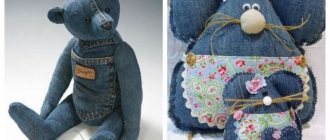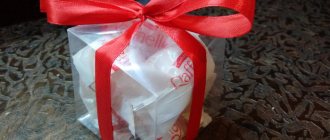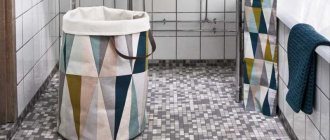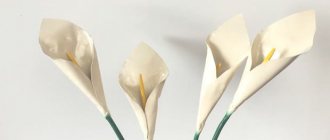Hi all! Today we will become real builders! I think that after what we do to you today, our children will be truly proud of us! What kind of program awaits us today? DIY wigwam patterns sizes! Did you have houses or tents when you were a child? I'm sure they were! No one grew up without having their own house, their own personal space! So, let's go?
But first things first! First, it’s worth saying a few words about what a house for a baby is. Why does he need it and how can we help our little ones. And then a master class awaits you! Not just one, but 3 at once! I have made a selection of three wonderful models of wigwams that are assembled in different ways. You can choose exactly the one that you like best, that suits you and that seems more accessible to you.
Materials and tools for making a wigwam
The choice of materials primarily depends on where the hut or wigwam will live.
If you are making a wigwam for children, the choice in any case will be more natural materials: cotton, burlap, etc. If the child will play exclusively at home, then you can use an old sheet or similar fabric that is suitable in size and color. For playing outdoors, in the courtyard of a house, in a country house, etc., it is better to take a denser fabric that will not be blown by the winds and will not get wet from the first drops of rain. Of course, you shouldn’t take tarpaulin, but it’s worth taking a closer look at fabric like cloth!
You will definitely need foam rubber or sheet synthetic padding for the floor. If the games involve children of not the most conscious age who are just getting used to the potty, it is better to sew oilcloth into the top layer of the floor to protect it from unpleasant surprises. For a street hut, such a layer will in any case be insufficient, unless the structure is installed on a plank floor. If the hut will stand on the ground, you will definitely need to sew pillows into it.
In addition to fabric and other sewing accessories, you will definitely need material for the frame; these can be wooden sticks of the required thickness or plastic pipes of a suitable diameter. The latter option is preferable, since the stick can still break under the pressure of children's games, and the plastic pipe is more likely to bend.
The frame and fabric are the main materials for a wigwam, but in addition to this, you will also need a strong rope that will hold the “top” of the frame together.
Step-by-step instructions vary depending on the type of wigwam you choose. First, the frame is made, then the pre-prepared parts are attached, after which you can start decorating. Only then should you move on to decorating the windows, sewing on ruffles, lace and other elements.
Winter plague in the yard
Outdoor games should be played not only in the warm season, but also in winter. On the eve of the New Year, many schools, kindergartens and children's yard clubs hold a competition for the best snow figure. However, few people undertake the construction of tents. Of course, for this to be a full-fledged winter home, you must at least have the roots of the small peoples of the north. But in order to build a winter temporary shelter, little is enough. You will need:
- Thick poles - from 6 to 12 pieces, depending on the desired strength of the tent, the optimal number of poles is 9 pieces;
- Thick rope, hammer;
- Textile;
- Snow and water.
It is desirable that the layer of snow on the ground should already be significant, and the frame poles could be stuck into it.
It is necessary to put all the poles together and wrap the top with rope. Distribute the poles over the optimal radius. Insert the poles into the snow, helping yourself with a hammer if necessary. Secure the ends of the poles with rope. Drape the fabric over the frame. If necessary, make slits in it and tie it to the frame with ribbons.
Start covering it with snow from the bottom up, first forming a snowdrift. After this, add density to the snow layer by sprinkling a little water on it and adding snow again. Increase the snow layer inside the chum. Ready!
#s3gt_translate_tooltip_mini { display: none !important; }
All children love nooks and crannies. Only in solitude can you give free rein to your imagination and go on an exciting journey through imaginary worlds. That is why children often build homemade houses from pillows, blankets and other improvised materials. But if you want your child to feel like a brave traveler or the hero of his favorite fairy tale, give him a hut. Moreover, making a hut for children with your own hands is quite easy, but the child will be able to fill his leisure time with exciting games. Today “Dream House” will share with its readers ideas for building children’s huts that can be installed both in the children’s room and outside.
Making a wigwam frame
You should start with sticks: they are either wrapped in a tight knot or holes are drilled and a rope is inserted there. The second option is more reliable, but not everyone has the opportunity to use additional tools.
The slats are placed at approximately the same distance from each other.
It is recommended to prepare fabric patterns in advance. The edges must be processed so that there are no threads sticking out. They can be attached to strings, sewn, glued, tied to each other - whatever your imagination allows.
Wigwam pattern
Depending on the shape, wigwam patterns for children may vary. The design can have 5, 6, 9 shelves, but the simplest and most understandable option for implementation will be a square frame option.
To use the material efficiently, you need to correctly position the pattern pieces on the fabric. To do this, you first need to display the “walls” of the wigwam on paper.
This pattern will make 4 pieces. The side elements should be sewn to the middle, this will form the entrance to the house. The pattern implies the presence of a window and a pocket for toys and other small items. The third party will be deaf.
The next step will be making a pattern for the cover. You should start from the front side, where the entrance will be located. Then the remaining elements are gradually sewn together and supplemented with special pockets for sticks.
Product dimensions may vary. The main thing is to maintain proportions and not go beyond a single idea.
Once the pattern for the cover has been drawn, it should be carefully cut out and applied to the fabric. Due to the fact that the cover has a rounded shape, it should be cut out carefully so that in the end the workpiece fits perfectly into the wooden structure.
How to make a wigwam pattern yourself is shown in this video:
Gable structures
A good protected option that allows you to relax in greater comfort or store things inside. The technology that allows you to build a hut from boards of this type does not differ much in detail from the previous version. The difference is that long poles on both sides are placed at an acute angle to the top beam. To better retain heat, the entrance to the structure should be partially covered, and the back half should be completely covered with branches, twigs and leaves.
It is worth noting that only a structure with a decking thickness of 20 cm or more will help provide shelter from heavy rain, otherwise moisture will pass through the walls and roof. The use of an awning or plastic film in such a situation will be more than justified. Draining water can be drained using small grooves along the side walls of the hut.
Option 1. How to sew a stable wigwam for children
Required tools and materials
To create a wigwam for children with your own hands, you will need the following materials:
- 4 slats to create a frame base and a few more for an additional frame below;
- dense fabric (not synthetic);
- rope or rope;
- threads
The main tools you need are:
- scissors;
- sewing machine and all accessories;
- tape measure or sewing tape measure.
Instructions
- Measure the sides of the triangle walls.
- Cut four pieces of fabric to these dimensions, adding 7 cm on each side.
- Sew them together, leaving one side unstitched - this will be a swing door. In total you will get 3 seams with large allowances - 6-7 cm on each side
- Sew the allowances along the edge so that you get a drawstring into which the stick will be inserted.
- Trim the top edge by 10-15 centimeters - this will be the hole “under the ceiling” of the tent. Finish the edge - overcast or hem.
- Stretch the tent from below onto the poles. Glue it to the wood at the top.
- The entrance to the wigwam is covered with two sheets, which can be folded over the racks or closed, closing the entrance.
- A small improvement significantly strengthens the structure: just on the entrance side, connect two posts at the bottom with tape (you will need glue). It should be attached to the sticks as close to the floor as possible so that the child does not stumble. What does this give? The racks will not be able to move in different directions.
What you need
In order to make your child happy with an impromptu playhouse made from scrap materials, you need building elements.
Pillows can be anything, but each type has its own characteristics. Please note that modern synthetic bedding is too light for the construction of house walls. This material can be made suitable for play only if the products have dense padding and the correct shape. Feather and down pillows are considered more allergenic, but they are heavier, which means they are better suited for creating a load-bearing structure. Unlike synthetic fibers, natural filler takes the desired shape through simple manipulations.
Somewhere in the middle, both in weight and ease of use for the walls of the house, there are pillows stuffed with cotton wool. Well, the best option is various poufs, headrests and other accessories from a sofa or bed. Compared to pillows, they are much denser and harder, which makes it possible to quickly build a house.
As for the blanket, the lighter it is, the better. Firstly, it will not begin to slide off the pillows under its own weight. Secondly, the child sitting inside will not be so hot.
Construction process
There is one little trick in the method below. The fact is that if you build all the walls from pillows, there may not be enough of them. Therefore, you need to assemble the structure as follows:
- Line up the pillows in parallel along some elevation - the seat of the sofa, its back, etc. Place heavier items on the bottom, lighter items on top. This way you will achieve maximum stability.
- Cover the structure with a blanket on top so that one edge goes behind the makeshift wall, and the other on the surface of the sofa or its back. This part can be pressed down on top with a pair of poufs.
- Make sure that the “roof” of the house does not cover it completely. It is better to leave “windows” for air circulation, so the child will not feel stuffy inside the home.
Playing the role of a wolf trying to blow this house down or a fireman saving it from a fire, you will have an unforgettable time with your children.
Option 2. Master class on making a wigwam without sewing
Materials and tools
For the frame:
- 6 wooden slats with a thickness of 2 to 4 cm and a length of 2 m. Instead of slats, you can take bamboo sticks - they are light, inflexible and look nice;
- twine or other strong rope;
- roulette;
- drill and drill bit (optional, but recommended);
- a strong rubber band (not needed if you have a drill).
Useful tips
To make your hut more comfortable and stable, we bring to your attention a few small tricks that will help you with this:
- Use a battery-powered flashlight to illuminate your indoor space. It must be placed on the “ceiling” or floor.
- Using pillowcases and towels, seal any cracks.
- If it gets hot, you can place a portable fan nearby.
- Pretend and fantasize. This way your game will be much more interesting.
- Use a pillow or cardboard box instead of a door.
- You can also use chairs, cushions and boxes to divide the fort into rooms.
- To make your fortress last longer, take lightweight blankets and sheets.
- For construction, try to use those items that no one will need in the near future.
- The hut is best placed in the center of the room. Avoid places near a door or window.
- Do not use breakable or fragile items. In addition to damaging them, they can also be harmful to your health and injure you.
- Avoid using plastic sheets as they give off an unpleasant and sometimes toxic odor.
- Do not turn on light bulbs inside. They can become hot, creating a fire hazard.
- Be careful with large objects.
- Don't create a big mess, as it will take a long time to clean up later.
- Always build a hut together with friends, because it is much more interesting.
Building a wigwam or hut in your home is a very simple task. Absolutely all items can be used. The most important thing is to approach the process with enthusiasm and imagination. Build, create, invite friends, have fun and benefit!
Option 3. Wigwam without sewing from patches (step-by-step photo)
Any old things or scraps of fabric will do. It looks bright, cheerful, and is done very simply and interestingly.
Option 4. DIY children's tent
Materials and tools
What we need:
- wooden slats - 4 pieces, each size 2.5 x 4 x 150 cm;
- rod dowel (round slats) - 3 pieces measuring 1.5 x 100 cm;
- fabric - 4.5 m;
- colored tape.
Instructions
- We make 2 holes in each wooden batten. One is upper, it is made 10 cm from one edge, the other lower is 3 cm from the other edge of the slats. The diameter of the hole should be 1.5 cm so that the round rail fits through it.
- We thread one round rod into the upper holes of all 4 slats. We will pass the second rod through the lower holes of the 2 slats. Using the third rod we connect the 2 remaining slats at the bottom.
- At both ends of the fabric, sew “pockets” for round sticks so that they can be inserted there. We insert the rods and stretch the fabric onto the frame. To secure the rods and prevent them from slipping out of the holes, simply wrap the outer edges with tape several times.
- All that remains is to put the pillows on the bottom, and the hut is ready!
Option 5. Wigwam for a girl
Materials and tools
You will need the following:
- tulle with a small pattern for the bottom;
- tulle with a large pattern for the top;
- wooden slats - 6 pcs.;
- rubber;
- ruler;
- scissors;
- drill with drill bit;
- thick yarn or ribbon;
- rope;
- pencil;
- buttons;
- pins;
- threads
Instructions
We mark each strip and make a hole. We pull the rope through them and tie a knot. We install the frame and adjust the position of each slats.
We lay out the tulle with a large pattern. Cut a triangular piece of material with the top cut off.
Fold the top and bottom pieces and secure them with pins. We sew them together. We repeat the same with the rest of the blanks. We fold large triangles with long sides, connect them with pins and sew them together.
We put the awning on the frame and secure it with buttons. Cut a small piece of tulle to make a wigwam threshold. We bend one of the sides and stitch it. We fix the threshold on the frame with buttons.
Option 6. Wigwam using PVC pipes for the frame
An excellent and non-standard approach to organizing a wigwam is to create a frame from polypropylene pipes. If you have scraps of such structures lying around at home, consider yourself lucky.
Despite being somewhat bulky, such structures are stable and lightweight.
To decorate such a structure, you can use denser fabrics - such a house will not fall apart!
You can build a traditional trapezoid-type frame, similar to a wooden frame; special holes are drilled into the PVC. It is important to work very carefully here so that the pipe does not burst.
What you need
In order to make your child happy with an impromptu playhouse made from scrap materials, you need building elements.
Pillows can be anything, but each type has its own characteristics. Please note that modern synthetic bedding is too light for the construction of house walls. This material can be made suitable for play only if the products have dense padding and the correct shape.
Feather and down pillows are considered more allergenic, but they are heavier, which means they are better suited for creating a load-bearing structure. Unlike synthetic fibers, natural filler takes the desired shape through simple manipulations.
Somewhere in the middle, both in weight and ease of use for the walls of the house, there are pillows stuffed with cotton wool. Well, the best option is various poufs, headrests and other accessories from a sofa or bed. Compared to pillows, they are much denser and harder, which makes it possible to quickly build a house.
As for the blanket, the lighter it is, the better. Firstly, it will not begin to slide off the pillows under its own weight. Secondly, the child sitting inside will not be so hot.
Option 7. Wigwam using a stepladder
Another non-standard solution is a wigwam based on a stepladder. For all its ambiguity (children and heights), this method is not without practical aspects.
Your child receives not only shelter, but also additional shelves in the form of steps
Another significant advantage is the mobility of the structure; such a frame can be easily moved and made into a wigwam almost anywhere. And for decoration it is enough to use any piece of fabric or blanket. The main thing is to monitor how firmly the folding mechanism is secured. Such a wigwam will not take up much space, and to fasten the elements you can use ordinary cords, which are very easy to use on metal fittings.
Leaf Crafts
Leaves of different shapes and colors can create a magical underwater world.
Undersea world
And in this application, the authors used not only leaves, but also pebbles to decorate the seabed.
Seabed with leaves and pebbles
From leaves, flowers, and birch bark you can make a very impressive picture depicting the inhabitants of the sea.
Leaf painting
Or you can make a real forest picture with a hedgehog, a mushroom and a forest.
A picture of leaves with a hedgehog, a mushroom and a forest
From the leaves you can make a deer with branched antlers.
Application “Deer from leaves” Such a wonderful hedgehog can be made from dried leaves and a plate folded in half.
Hedgehog made from leaves and a paper plate You can use not only leaves, but also a pine cone in the applique. Then we can have a funny little turkey.
Turkey made from pine cones and leaves
Perhaps my favorite applique of yellow maple leaves is the lion.
Lion applique from leaves You can make a chic dress for the queen of autumn from leaves. We paint the background with delicate watercolor stains with salt. Application from leaves “Queen of Autumn”
You can make an “autumn forest” craft from cardboard rolls and natural materials.
Autumn forest
Leaves, branches and berries make a fairy-tale forester. Such a craft will not go unnoticed at the autumn exhibition.
Fairytale woodsman made from natural materials
A bouquet of maple leaves has already become a classic of autumn crafts in kindergarten.
Rose from leaves
Option 8. Tent for a little princess
A children's tent does not always imply wild and active games; often the child just wants to play quietly there alone, maybe read a book, etc. Having his own corner, closed from everyone, even in his own room, is not a rare need for children.
Materials and tools
In order to make such a tent, you will need:
- aluminum hoop (aka hula hoop);
- fabric, thread, scissors, rope;
- a hook or loop in the ceiling.
Instructions
The fabric needs to be gathered into a cone so that it is evenly distributed over the hoop, and a dome of about 30 cm remains at the top. Sew a loop from a strong fabric and place it in the center of this assembly. Sew the top of the head with thread and tie it with a rope on top. Use a few stitches to secure the fabric to the hoop.
Next, hang the tent to the hook by the loop and distribute the fabric. Place a thick pillow inside.
Awning
Almost any fabric can be used as a covering. However, it is better to give preference to natural fabrics. This is due to the fact that the space of this playhouse is quite closed, therefore, the material should allow air to pass through well (it would not be a bad idea to leave a window).
Cotton, linen or canvas fabric, silk are perfect. You can also combine them: make the base from stronger materials, and the walls from lighter ones. The floor of the wigwam can be covered with a blanket filled with synthetic padding.
How to sew a mattress into a wigwam for children
We advise you not to do complex cutting, but to sew a square mattress. You can use a large pillowcase. If you put a 10-20 mm sheet of foam rubber into it, the frame will stand on top. If there is a piece of synthetic padding in the pillowcase, the mattress will be soft and can be placed inside the wigwam by tucking the corners.
A mattress is a must - it closes the space, it is warm and cozy. With it, a wigwam, sewn with your own hands for a child, turns into a house, a nest, a cave, a secret shelter - depending on the circumstances.
Traveler's hut
Older children can make their own structure from available materials: ropes, sheets and pegs. To do this, it will be enough to perform the following steps:
- stretch a rope between the trees;
- throw a sheet or blanket on top;
- Stretch the edges of the blanket and secure it to the ground with wooden pegs.
Such a house, made with your own hands, will give your children double pleasure. Blankets or pillows will add comfort, and thematic attributes will help you feel like a hero of a fascinating story: a flashlight, binoculars, a flask and a backpack.
How to decorate a wigwam
To make the wigwam even more attractive, you can decorate it. Decorations for such a home can include:
- pillows;
- flags (especially good for masking the upper ends of support sticks);
- bows;
- pom-poms;
- LED garlands;
- tassel pendants;
- dream Catcher;
- mobile with stars or planets;
- feathers;
- decorative braid;
- fringe;
- embroidery;
- thermal stickers;
- applique.
You can learn how to sew flags for wigwam sticks from these video tutorials:
From this video you will learn how to make a simple but very beautiful decoration for a wigwam - a garland of tassels made of paper.
This video shows in detail the technique of making yarn tassels.
How to make a dream catcher is shown in this video:
How to sew two charming pillows: a cloud and a star - shown in these videos:
In many ways, the selection of decorations depends on the style of the wigwam (Indian, nautical, knightly, romantic, New Year's, space, for a princess, etc.) and the children's room as a whole.
Useful tips
To make your hut more comfortable and stable, we bring to your attention a few small tricks that will help you with this:
- Use a battery-powered flashlight to illuminate your indoor space. It must be placed on the “ceiling” or floor.
- Using pillowcases and towels, seal any cracks.
- If it gets hot, you can place a portable fan nearby.
- Pretend and fantasize. This way your game will be much more interesting.
- Use a pillow or cardboard box instead of a door.
- You can also use chairs, cushions and boxes to divide the fort into rooms.
- To make your fortress last longer, take lightweight blankets and sheets.
- For construction, try to use those items that no one will need in the near future.
- The hut is best placed in the center of the room. Avoid places near a door or window.
- Do not use breakable or fragile items. In addition to damaging them, they can also be harmful to your health and injure you.
- Avoid using plastic sheets as they give off an unpleasant and sometimes toxic odor.
- Do not turn on light bulbs inside. They can become hot, creating a fire hazard.
- Be careful with large objects.
- Don't create a big mess, as it will take a long time to clean up later.
- Always build a hut together with friends, because it is much more interesting.
Wigwam in the interior of a children's room
In a children's room, a wigwam will become a place of solitude for the child. It doesn’t matter whether this room is for two children or for one, the baby still needs a house that is commensurate with himself, and not with the world of adults. There you can talk secrets with the shaggy bear, look at a book, and just fall asleep on the mattress.
Sources
- https://detskaya.info/igrushki-i-igryi/vigvam
- https://yellowhome.ru/2018/03/27/sooruzhenie-detskogo-vigvama-svoimi-rukami-master-klass-s-poshagovym-foto/
- https://kakpostroit.su/vigvam-dlya-detey-svoimi-rukami/
- https://luckclub.ru/kak-sshit-vigvam-dlya-detej-svoimi-rukami-vykrojki-master-klass
- https://mychildroom.ru/handmade/vigvam-za-9-shagov-master-klass-i-idei-dekora.html
- https://daynotes.ru/vigvam_svoimi_rukami_vykrojki_razmery/
- https://ratatum.com/kak-sdelat-vigvam-shalash-palatka-dlja-detej-svoimi-rukami/
- https://HouseChief.ru/vigvam-dlya-detej-svoimi-rukami-foto-poshagovogo-izgotovleniya.html
- https://active-mama.com/kak-sdelat-detskij-vigvam-svoimi-rukami.html











